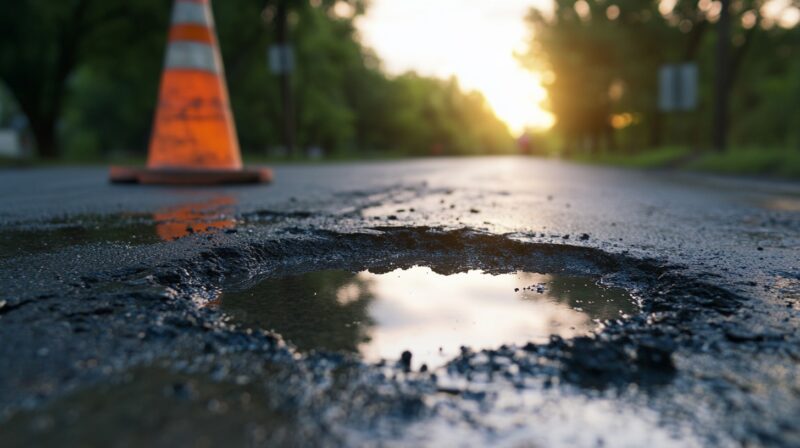Pothole repair is essential to maintaining safe and efficient roadways. Timely repairs prevent further deterioration and save on costs that can balloon with long-term neglect.
While potholes are a common issue, particularly in areas with high traffic or frequent weather changes, choosing the right repair method is key to achieving a balance between cost and effectiveness.
Today, we will discuss various methods of pothole repair, highlighting their cost-effectiveness and appropriateness for different road conditions.
Common Cost-Effective Pothole Repair Methods
There are numerous solutions you can apply to repair potholes. Now we will address the most cost-effective ones:
Cold Asphalt Patching
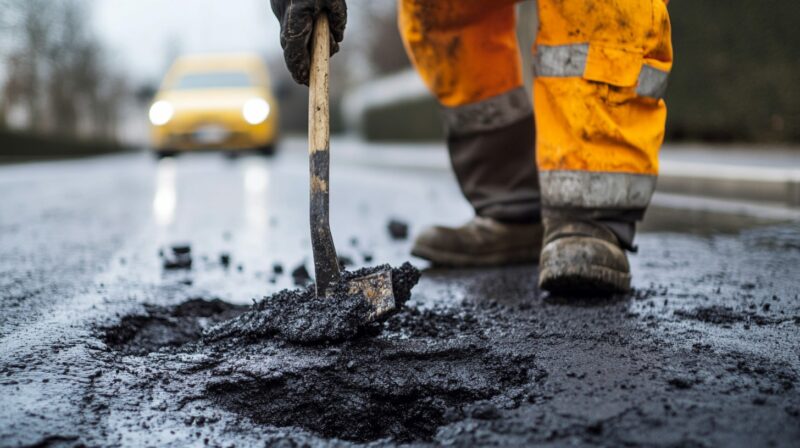
Cold asphalt patching is a simple, pre-mixed solution often used for quick pothole repairs.
Applied at ambient temperatures, this method requires no special equipment, making it accessible for professionals and DIY repairs.
One of the primary advantages of cold asphalt patching is its convenience; it can be applied in any weather condition and requires minimal preparation.
However, the major downside to cold asphalt patching is its temporary nature.
While it provides an immediate fix, it is prone to wear and tear, especially in high-traffic areas or places with severe weather conditions.
Despite the low upfront cost, the method may not be cost-effective for larger or more permanent needs.
Cold asphalt patching is best suited for small-scale or emergency repairs, where the goal is to quickly address the problem before it worsens.
Hot Mix Asphalt
Hot mix asphalt is a more durable solution compared to cold patching. It involves heating the asphalt to a high temperature before applying it to the damaged area.
The heated asphalt is then compacted to create a strong, seamless bond with the existing roadway, ensuring a longer-lasting repair.
The major advantage of a hot mix is its durability, particularly in high-traffic areas.
Once applied, the repair can withstand significant wear and tear, making it ideal for larger or more heavily used roads.
However, the hot mix does require specialized equipment and must be applied during warm weather, limiting its usability in colder climates.
While the initial cost of hot mix asphalt is higher than cold patching, the long-term savings from fewer reapplications make it a cost-effective option for large-scale repairs.
Polyurethane Asphalt
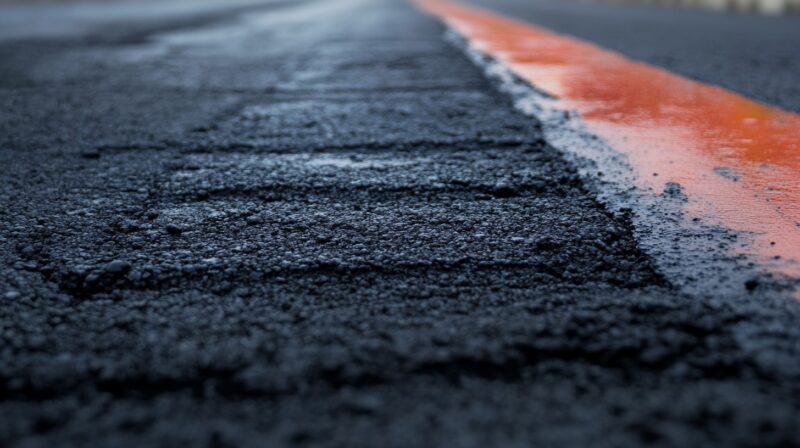
Polyurethane asphalt is a relatively newer option that offers a blend of durability and flexibility. This material can be used year-round, with rapid curing times that allow the road to be ready for use quickly after repairs.
Polyurethane asphalt is highly durable and able to withstand frequent traffic and weather changes without the need for constant reapplication.
Although it has a higher initial cost compared to cold and hot mix asphalt, the long-term savings are significant due to the material’s durability and reduced need for future repairs.
This makes polyurethane asphalt an excellent choice for roads in areas that experience frequent freeze-thaw cycles or heavy traffic.
Modern Pothole Repair Methods
Now that we have gone through the cost-effective ones, let us address the modern solutions.
Infrared Asphalt Repair
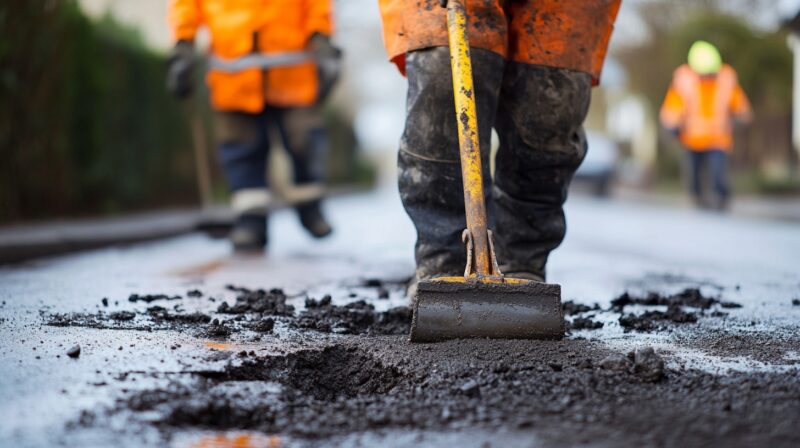
Infrared asphalt repair is one of the more modern methods for pothole repair, utilizing infrared technology to heat the existing asphalt and blend it with new material.
This process creates a seamless repair that reduces the risk of potholes reappearing, as the new and old bond together without creating weak points.
One of the major advantages of this method is its environmental friendliness, as it minimizes waste by reusing the existing asphalt. It also produces a more durable repair compared to traditional methods.
However, infrared asphalt repair requires specialized equipment and trained personnel, which increases the upfront cost.
In terms of long-term cost-effectiveness, infrared asphalt repair offers significant savings due to its durability. It’s an excellent option for roads that experience moderate to heavy traffic and need a long-lasting solution.
Spray Injection Patching
Spray injection patching is another modern pothole repair method that involves cleaning the pothole with compressed air before injecting an asphalt emulsion followed by an aggregate mix.
The method is fast, making it ideal for quick fixes, especially in emergencies or when weather conditions are less than ideal.
The main advantage of spray injection patching is its speed. It can be applied quickly, even in adverse weather conditions, making it a go-to method for municipalities looking to repair many potholes in a short time.
However, the longevity of the repair can vary depending on the technique used and the conditions of the road. In some cases, it may serve as a temporary fix, requiring additional repairs in the future.
Spray injection patching falls in the medium-cost range, offering a balance between speed and cost-effectiveness for large-scale road repairs.
DIY vs. Professional Pothole Repair
The decision between DIY and professional pothole repair depends on the scale of the repair and the type of material being used.
DIY repairs, typically done with cold patching, are suitable for small-scale repairs such as driveways or low-traffic roads.
Cold patch materials are available at most hardware stores and require minimal equipment to apply, making it a convenient option for homeowners or small businesses.
Professional repairs are necessary for larger-scale projects or high-traffic roads. Methods like hot mix asphalt, polyurethane asphalt, and modern techniques like infrared repair require specialized equipment and experienced professionals to ensure the repair lasts.
Professional repairs often come with a higher upfront cost, but the long-term durability and reduced need for future repairs make them a more cost-effective option for municipalities and businesses managing large road networks.
Factors Influencing Cost-Effectiveness
When selecting a pothole repair method, several key factors must be considered to ensure cost-effectiveness. These factors can greatly impact both the initial cost and long-term savings.
- Traffic Volume and Road Use:
- Roads with heavy traffic demand more durable repair solutions, such as hot mix asphalt, to withstand constant vehicle pressure.
- In contrast, low-traffic roads can utilize more economical solutions, such as cold patching, which may not need frequent reapplications.
- Weather Conditions:
- In regions with freeze-thaw cycles, repairs are more susceptible to damage.
- Asphalt expands and contracts in cold climates, leading to cracks and the need for frequent maintenance.
- Choosing a weather-resistant method can reduce long-term costs.
- Availability of Materials and Equipment:
- The accessibility of the materials and tools needed for repairs impacts the feasibility of certain methods.
- For example, infrared asphalt repair requires specialized equipment, which may not always be readily available.
- Long-Term vs. Short-Term Repair Needs:
- Some methods, like cold patching, are cost-effective for quick, temporary fixes, but may lead to higher costs over time due to frequent maintenance.
- Long-term solutions, such as hot mix or polyurethane asphalt, offer more durability and fewer future expenses.
Evaluating these factors helps ensure that the chosen repair method balances both initial costs and future savings effectively.
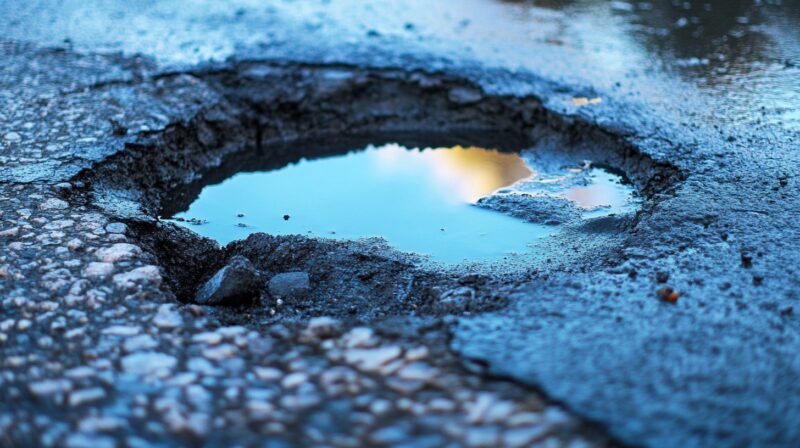
The Bottom Line
Choosing the most cost-effective pothole repair method requires careful consideration of both initial costs and long-term savings. Also, it’s good to consider what the road or driveway is made of so you can repair it more efficiently.
While cold patching offers a quick and cheap solution, more durable methods like hot mix asphalt or polyurethane asphalt may offer better value in the long run.
Evaluating road usage, weather conditions, and available resources is key to selecting the most suitable repair method for any situation.

